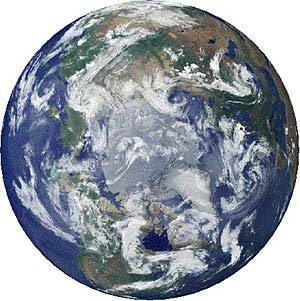Weather in a Tank
The rotating tank experiments are interactive laboratory-based experiments aimed at deepening students’ understanding of the basic principles of rotating fluid dynamics. Originally developed at the Massachusetts Institute of Technology, “Weather in a Tank” has improved the teaching of atmosphere, ocean, and climate sciences in some 70 universities.
The experiments are designed to link real world phenomena to theory and models. As colored dyes are stirred into a square tank of rotating water, students can observe aesthetically stunning examples of the processes underlying atmospheric principles, such as convection and solid body rotation, and ocean phenomena, such as Ekman pumping and density currents. Various manipulations of the tank inspire students to understand the real environment on a whole new level. For example, demonstrations cyclone/anticyclone formation and wind-driven circulation illustrate the mechanisms driving the Great Pacific Garbage Patch. Before the demonstrations, students can make predictions of what should occur in the tank and, in turn, learn that the dynamics of rotating fluids are often not intuitive.
The approach is effective not only in more advanced laboratory courses for undergraduate majors in atmosphere/ocean/ climate sciences, but also in large introductory classes for non-science majors, mainstream meteorology and oceanography courses, and outreach activities.
For further information, please visit the Weather in a Tank webpage
The following articles contain in-depth discussion of the method:
“WEATHER IN A TANK”—Exploiting Laboratory Experiments in the Teaching of Meteorology, Oceanography, and Climate - BAMS (Nov 2009)
The Effectiveness of Rotating Tank Experiments in Teaching Undergratuate Courses in Atmospheres, Oceans, and Climate Sciences - Journal of Geoscience Education (Feb, 2012)




